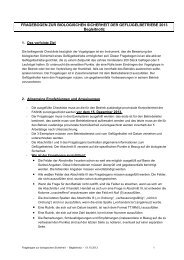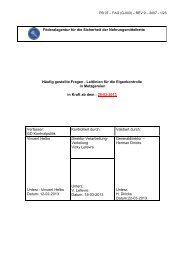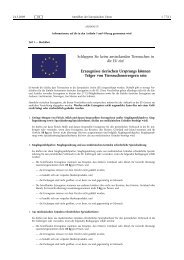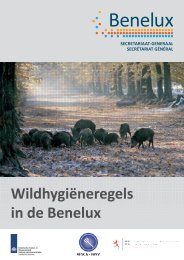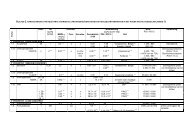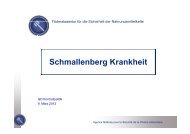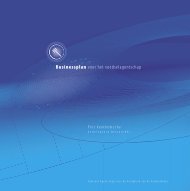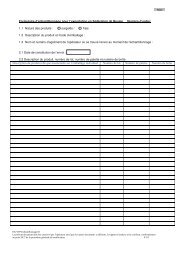Titre de la formation Symposium CIP - Favv
Titre de la formation Symposium CIP - Favv
Titre de la formation Symposium CIP - Favv
You also want an ePaper? Increase the reach of your titles
YUMPU automatically turns print PDFs into web optimized ePapers that Google loves.
9/25<br />
Agence fédérale<br />
pour <strong>la</strong> sécurité<br />
<strong>de</strong> <strong>la</strong> chaîne alimentaire<br />
DG Laboratoires<br />
<strong>CIP</strong>AC meeting against <strong>de</strong>fined criteria and then consi<strong>de</strong>red for adoption and publication<br />
in the <strong>CIP</strong>AC handbooks. The work is organized by the use of the <strong>CIP</strong>AC in<strong>formation</strong><br />
sheet. Once the preliminary work has proved that the method is robust and suitable for<br />
testing in a full scale trial, the in<strong>formation</strong> sheet is sent out. The in<strong>formation</strong> sheets have<br />
a global distribution and provi<strong>de</strong> in<strong>formation</strong> on the methods, including a summary of the<br />
equipment required and relevant contact <strong>de</strong>tails for the trial. All interested <strong>la</strong>boratories<br />
with the necessary equipment can participate. Once the trial is finished, the results are<br />
presented at the annual meeting. The adoption of the methods is then <strong>de</strong>ci<strong>de</strong>d by a body<br />
comprising <strong>CIP</strong>AC members, correspon<strong>de</strong>nts, observers and selected industry<br />
representatives. <strong>CIP</strong>AC has published the <strong>de</strong>cisions of the 49 th<br />
meeting, <strong>CIP</strong>AC<br />
handbook L and CD ROM E to L. The <strong>CIP</strong>AC web site is continuously improved,<br />
facilitating access to <strong>CIP</strong>AC methods by online searching. Ongoing work inclu<strong>de</strong>s the<br />
systematic review of <strong>CIP</strong>AC methods, reopening of the prepublication scheme for<br />
or<strong>de</strong>ring individual methods and the in<strong>de</strong>pen<strong>de</strong>nt <strong>la</strong>boratory validation of methods for<br />
relevant impurities.<br />
Dr Müller exp<strong>la</strong>ined, in response to a query from Dr Tom Woods about the in<strong>de</strong>pen<strong>de</strong>nt<br />
<strong>la</strong>boratory validation of the impurity methods, that this was a request from industry for<br />
help in finding in<strong>de</strong>pen<strong>de</strong>nt <strong>la</strong>boratories to un<strong>de</strong>rtake the work. <strong>CIP</strong>AC is happy to help<br />
with this and with the evaluation of the data and ultimate publication of the methods.<br />
5.2 Food and Agriculture Organization of the United Nations (FAO)<br />
Dr Gero Vaagt introduced the ongoing work of the FAO in this area. In August 2005, a<br />
regional conference on pestici<strong>de</strong> specifications was held for An<strong>de</strong>an countries in Bogota,<br />
Colombia. In September 2005, the JMPR meeting took p<strong>la</strong>ce. In November 2005, a<br />
meeting to finalize the supplement of the FAO and WHO manual on pestici<strong>de</strong><br />
specifications was held in Wä<strong>de</strong>nswil, Switzer<strong>la</strong>nd. The Chinese version of the manual<br />
was <strong>la</strong>unched at a national workshop in Beijing in November 2005. Another workshop on<br />
pestici<strong>de</strong> specifications and equivalence <strong>de</strong>termination was held in Mexico City in March<br />
2006. There will be an international Crop-Science Conference in July 2006 organized by<br />
the Pestici<strong>de</strong>s Manufacturers & Formu<strong>la</strong>tors Association of India (PMFAI) at which the<br />
role of pestici<strong>de</strong> specifications will be addressed. The revised version of the manual on<br />
<strong>de</strong>velopment and use of FAO and WHO specifications for pestici<strong>de</strong>s is avai<strong>la</strong>ble in<br />
English on the FAO and WHO web sites. Trans<strong>la</strong>tions of the original manual are<br />
avai<strong>la</strong>ble in Chinese and Spanish; an Arabic version will be avai<strong>la</strong>ble shortly.<br />
The FAO are currently reviewing the avai<strong>la</strong>bility of methods of analysis for impurities<br />
inclu<strong>de</strong>d in FAO specifications <strong>de</strong>veloped un<strong>de</strong>r the old procedure. The importance of<br />
coordinating the activities of the JMPS and the JMPR was exp<strong>la</strong>ined. Specifications for<br />
technical material should be <strong>de</strong>veloped for a pestici<strong>de</strong> before it is evaluated by the<br />
periodic review programme of the CCPR and for new pestici<strong>de</strong>s, but this should not<br />
<strong>de</strong><strong>la</strong>y evaluation of pestici<strong>de</strong>s by the JMPR. FAO Specifications and Evaluations for<br />
P<strong>la</strong>nt Protection Products inclu<strong>de</strong> sections entitled “Hazard summary” and “Appraisal”,<br />
which cover toxicological in<strong>formation</strong> and an appraisal of the hazard potential of the<br />
compound. It is important to indicate whether these sections are based on existing<br />
national/regional or international evaluations. In the future, the JMPR will refer to<br />
LAB 00-F 6.2-01-v.01-2006-



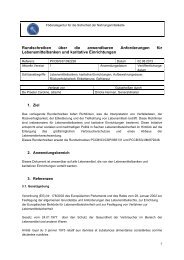
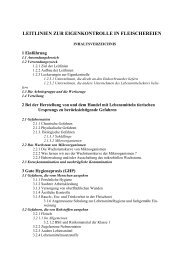

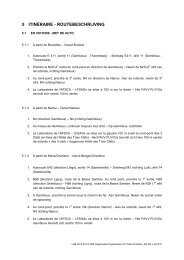
![DPA 2298 Schweine: Aujeszky-Impfung [2298] v2 - FAVV](https://img.yumpu.com/22032815/1/184x260/dpa-2298-schweine-aujeszky-impfung-2298-v2-favv.jpg?quality=85)
